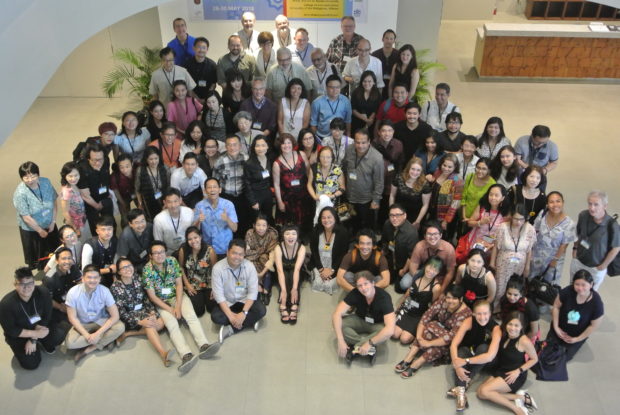
Thank you for an amazing conference,” a delegate from Hong Kong gushed over lunch. “Thank you for the diversity of Filipino food, for the diversity of performances, and for the diversity of ideas that have filled our minds over three days. Thank you for taking good care of us.”
The sentiment, widely shared, marked the resounding success of the Asian Shakespeare Association’s (ASA) Third Biennial Conference, held from May 28 to 30, at the Areté, Ateneo de Manila University and the University of the Philippines Diliman. Its theme: “Shakespeare, Traffic, Tropics.”
Over 120 delegates from all over world joined the conference to feast on the ideas circulated in panel presentations and seminars, on an exhibit of Manga Shakespeare, and on performances and workshops spread out over a three-day period.
Peter Holland, president of the International Shakespeare Association (ISA), gave a keynote address that explored the ways movie trailers on Shakespeare films—a source of data hardly touched in Shakespearean studies—reveal the uneasy relationship between Shakespeare and the film industry.
Less uneasy have been intercultural adaptations of Shakespeare in Asia that have flourished, according to several papers, for centuries, notably in India, Japan, China and Malaysia, and following suit in Taiwan, the Philippines, Korea and Bangladesh. These adaptations, several of them induced by “strolling players” who travel within and across countries, merge Shakespeare with folk traditions, local philosophies or current events. Thus, they have become uniquely their own, and not simply, as ASA president Beatrice Lei points out, “an offshoot of London.”
Issues of translation
These adaptations bring to the fore issues of translation, the subject of two seminar sessions. Balancing the need to remain faithful to the Bard’s text and communicating his language to local audiences remain a major concern, and opting to localize meaning often unleashes new insights into Shakespearean texts.
Translating Shakespeare into film, novel, dance, musical, digital works and even manga poses other challenges, all the while enabling Shakespeare to penetrate local consciousness.
Winning prints
Nowhere is this penetration more evident than in schools, the concern of seminars on Shakespeare and education. How does one teach Shakespeare? In what language must it be taught? And how young should one be to start learning Shakespeare?
Holland, in a podcast made during the conference for Malaysian radio, suggests that 3 years old is a good age. Kids that age don’t have to understand all of the language (as they do not understand all that their parents say), but they can feel the play and get a sense of the action from what they see and hear.
Also part of the conference was a display of winning prints featured in a Manga Shakespeare exhibit, where two Filipinos won top prizes in the under-25 category; plus a workshop on Manga print-making and sessions on performance techniques.
Visual feast
Topping all these was a film showing of Yamanote Jijosha’s acclaimed version of “The Tempest”—a visual feast—and three Shakespearean productions. Tanghalang Ateneo’s “The Squaddies’ Shrew” recast the original play as a treatise on the objectification of women. The KL Shakespeare Players’ “Demystified Macbeth” offered a superb template for high schools wishing to present Shakespeare in an accessible form. And Areté’s “RD3RD,” a provocative adaptation of “Richard III,” received a standing ovation, with Holland saying it was the highlight of all Shakespearean adaptations he has seen—the best example of “speaking truth to power from the stage.”
The 2018 Asian Shakespeare Conference’s next stop is Seoul in 2020. And the next set of organizers are starting to figure out how they can match the Manila conference.
“Look,” said the next Korean convenor, “they even have flowers on dining tables!” He quickly jotted that down.
The conference’s key donors were the Japan Foundation, Metrobank Foundation, Smart, Office of the Initiatives for Culture and the Arts, and Intermatrix Copy Systems.
Ricardo Abad is the artistic director of the Areté, Ateneo de Manila University.